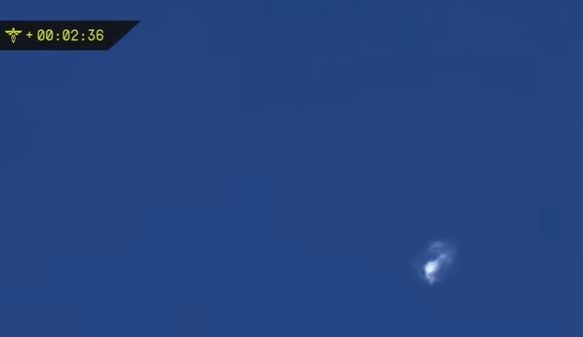A communications satellite in Intelsat’s Epic fleet created debris in space after it suffered an explosion in geostationary orbit at 0430 GMT on 19 October.
Update on 29 October: Initial reports estimated that the event created 20 pieces of debris, but it was later revealed that more than 500 pieces were being tracked.

Artist’s impression of IS-33e on station. Courtesy: Boeing
Intelsat confirmed that its Intelsat 33e (IS-33e) was unlikely to be recovered. As a satellite that was hitherto enjoying its relatively ‘safe’ middle-age years, the cause of the explosion was unclear although Intelsat did confirm that a power loss had occurred. It is perhaps pertinent to remember that IS-33e did have a slower than expected final positioning into orbit after its launch in 2016. Its main Leros 1c apogee kick motor failed, forcing the spacecraft to use its secondary thrusters.
In general, explosive events in orbit are usually related to propulsion systems and their propellants, or to battery systems. Some have pointed to a potential similarity to the fate of sibling satellite IS-29e, which came to an explosive end in April 2019.
That failure was believed to be caused either by a design error compounded by high solar activity or by a micrometeoroid strike. According to reports, an electrical arcing/electrostatic discharge event on the electrical harness (unfortunately located outside a Faraday cage) impinged on a nearby propellant line, causing a leak that culminated in an explosion.
Customers relying on IS-33e, which was located above the Indian Ocean over longitude 60.1 degrees East, have been transferred to other spacecraft.
Comment by David Todd:
IS-33e was not insured beyond its initial launch plus one year policy. Seradata understands that, after the failure of IS-29e, Intelsat was offered insurance on IS-33e as part of an in-orbit deal covering its whole fleet but ultimately the company declined. This was a mistake assuming that there were no major policy exclusions. Losing two expensive uninsured birds in orbit has got to hurt.
Boeing’s reputation is likely to suffer further as it built both IS-33e and IS-29e using its Boeing 702MP (702B) bus. It is going through the mill with its spacecraft failures, most publicly involving faults to the human-carrying Starliner. The company is also accused of quality control lapses in its commercial aircraft line.
With respect to the debris from the IS-33e explosion, some fragments will have been blasted in different directions. Seradata is aware that at least one spacecraft has been moved to avoid fast-moving debris from this explosion. There is a potential for a third-party claim if a debris strike occurs.
Unlike in other countries, operators such as Intelsat are not obliged by the US government to take out third-party in-orbit liability insurance. The US, as the launching state, is ultimately responsible for any damage, according to the Space Liability Convention 1972. This puts it at risk of having to pay for any third-party claim.
One other thing: while low Earth orbits ‘self-cleanse’ in a relatively short amount of time, due to the small amount of atmospheric drag, debris at GEO altitudes can remain in orbit for centuries.







